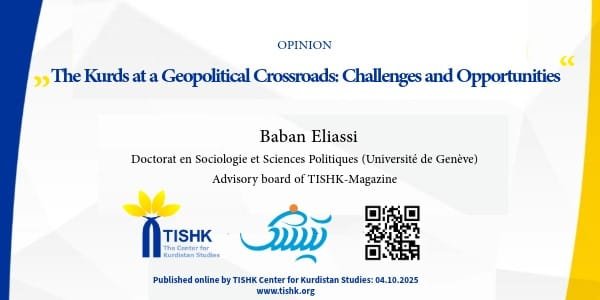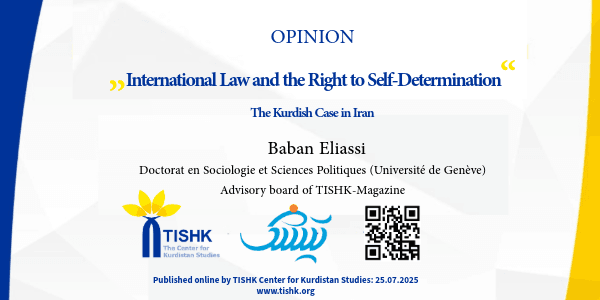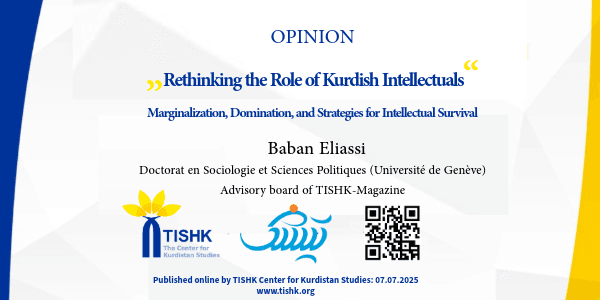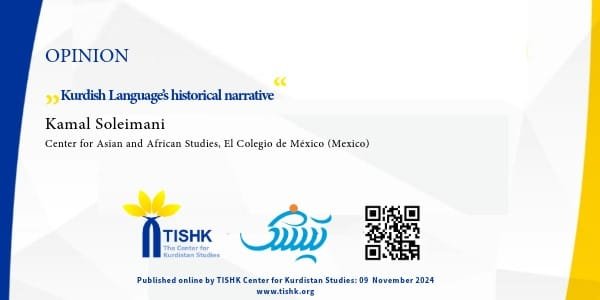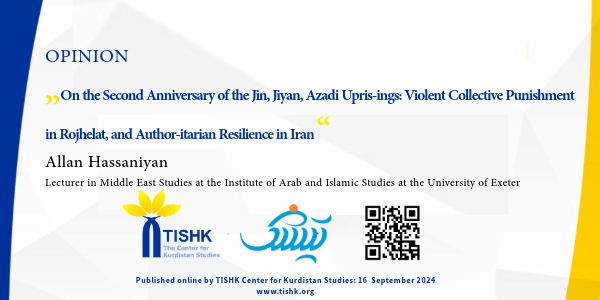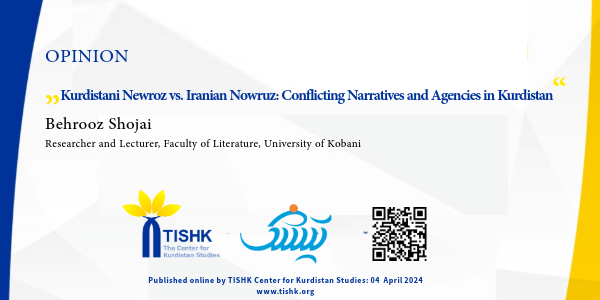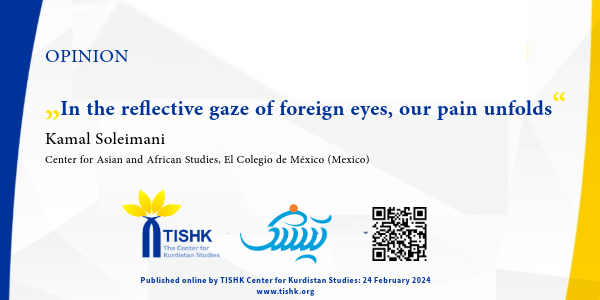OPINION
The Kurds at a Geopolitical Crossroads: Challenges and Opportunities
Published online by TISHK Center for Kurdistan Studies: 04.10.2025
DOI
Eliassi, Baban (2025): The Kurds at a Geopolitical Crossroads: Challenges and Opportunities. Kurdistan Agora. TISHK Center for Kurdistan Stdies.
Abstract
The Kurds, with an estimated population of 40–45 million, represent the largest stateless nation in the world. Despite significant political achievements in Iraq and Syria, they continue to face repression, marginalization, and vulnerability, particularly in Iran. This article traces the historical roots of their struggle, from the failed promises of the post-World War I treaties to today’s complex regional dynamics. It highlights the Kurds’ role in counterterrorism and the importance of social movements such as jin, jiyan, azadî.
.
Keywords: Kurds, Stateless Nation, Middle East Politics, Autonomy and Self-Determination, Jin, Jiyan, Azadî
The Kurds at a Geopolitical Crossroads: Challenges and Opportunities
The Kurdish people, numbering around forty to forty-five million, constitute the largest stateless nation in the world. Spread primarily across Turkey, Iraq, Iran, and Syria, the Kurds find themselves at the center of ongoing geopolitical shifts in the Middle East. Despite their historical resilience and notable political achievements, particularly in Iraq and Syria, they continue to face profound vulnerabilities.
Following the First World War, the Treaty of Sèvres (1920) envisioned the creation of a Kurdish state. However, the Treaty of Lausanne (1923) erased this possibility, integrating the Kurds into centralized states (geopolitique.eu). Since then, Kurdish aspirations have ranged from demands for independence to regional autonomy and cultural recognition. Kurds in Iran, in particular, have endured political and cultural marginalization under a centralized and repressive system, which has limited their opportunities for reform and autonomous political organization. This situation is further complicated by persistent orientalist perceptions in certain Western analyses, which argue that the Middle East is culturally incapable of embracing democracy, thus justifying authoritarian and centralized governance in the region (Said, 1978).
In a recent statement, Thomas Barrack, former U.S. envoy, highlighted the artificial nature of Middle Eastern state structures: “There is no Middle East. There are tribes and villages. Nation-states were created by the British and French in 1916.” He further explained that social structures in the region begin with the individual, then family, village, tribe, community, religion, and only then the nation-state. This perspective underscores the complexity of social and political arrangements in the region and the limits of viewing it solely through the lens of Western-style nation-states.
Over the past decades, several developments have reshaped the Kurds’ position. In Iraq, the fall of Saddam Hussein allowed the Kurdistan Regional Government (KRG) to consolidate quasi-state institutional and military autonomy, transforming previously isolated towns into dynamic communities with expanding schools and hospitals, offering families a vision of stability and growth (rudawrc.net).
In Syria, the civil war enabled the Kurds of Rojava to experiment with local autonomy, giving communities the tools to manage resources and educational programs directly, fostering civic engagement and social cohesion (kurdishglobe.krd). During the fight against ISIS, the Peshmergas and YPG/SDF emerged as strategic partners of the United States and the international coalition, enhancing their global visibility and inspiring pride and hope among local Kurdish populations, especially youth and women engaged in reconstruction efforts (progressive.international).
These developments have strengthened the Kurds’ centrality in regional balances, while simultaneously exposing them to interstate rivalries and pressures from neighboring states. Militarily and in terms of security, Kurdish forces are essential in counterterrorism efforts, yet remain dependent on external support, particularly from the United States. Economically, Iraqi Kurdistan’s substantial oil and gas reserves position it as a strategic partner for Europe, especially in the context of rising tensions with Russia and Baghdad’s pro-Iranian elite dominance (rudawrc.net). These resources enable infrastructure projects, employment opportunities, and social services for local populations, though access remains uneven. Institutionally, the KRG has embarked on reforms aimed at governance modernization, despite persistent corruption (gulanmedia.com). Socially, the Kurdish women’s movement and the slogan jin, jiyan, azadî have given universal significance to their struggle, strengthening social mobilization and offering hope for future generations, particularly girls and young women who view these movements as a model of empowerment (progressive.international).
For Kurds in Iran, a strategy inspired by the salami theory is particularly relevant: gradually engaging in political and economic reforms, building local and regional coalitions, and expanding influence without directly confronting the central regime, allowing local communities to experience tangible improvements in daily life (Gunter, 2011).
The Kurdish people face multiple challenges. Internal divisions between parties and movements limit political cohesion, and their geographic dispersion reduces transnational unity. They remain dependent on military and economic support from regional and international powers. Threats from Turkey and Iran persist, while corruption and limited economic diversification leave them reliant on oil revenues. International recognition of their right to self-determination remains still away. As Francis Fukuyama observed, “Middle Eastern states are not real states,” reflecting both institutional.

